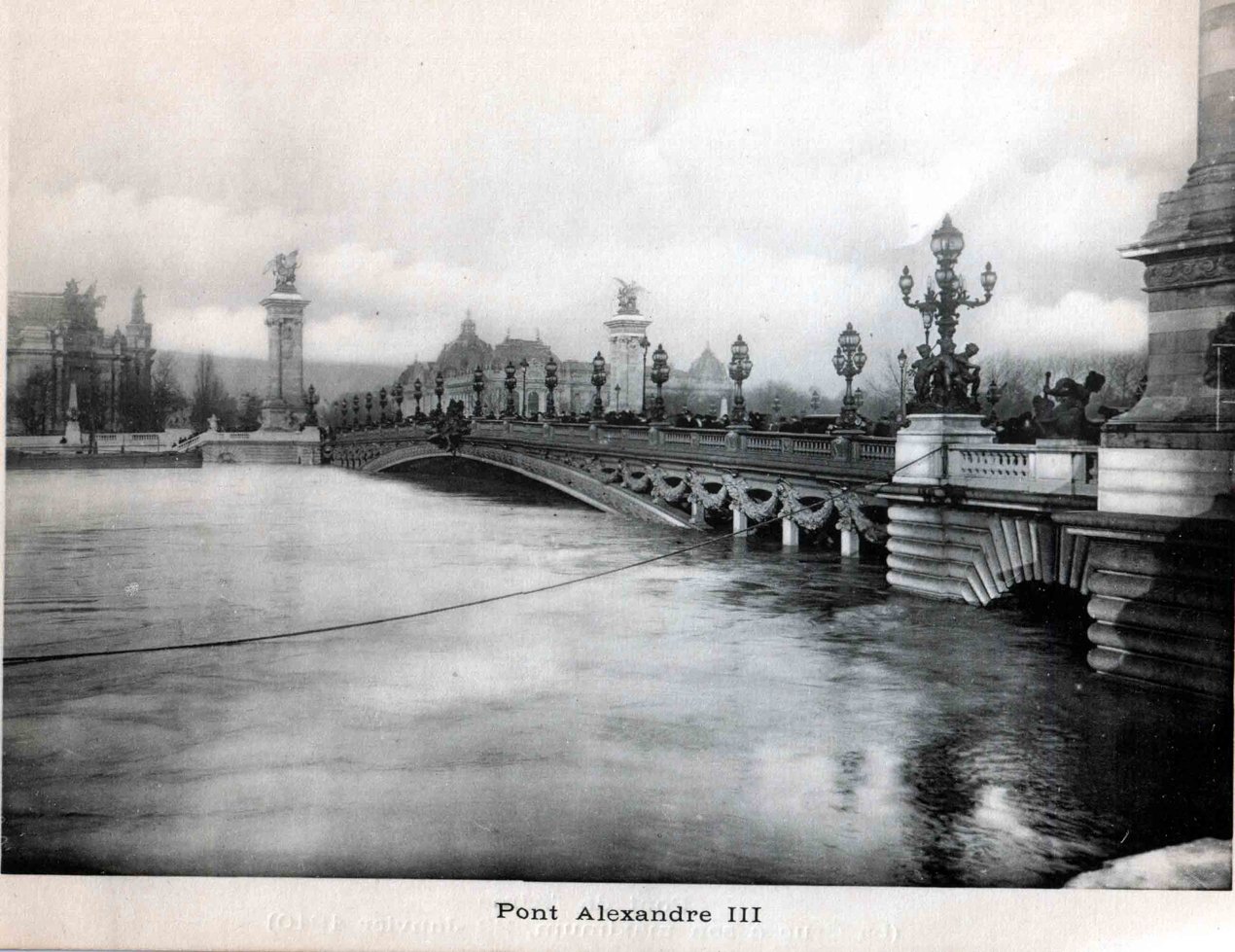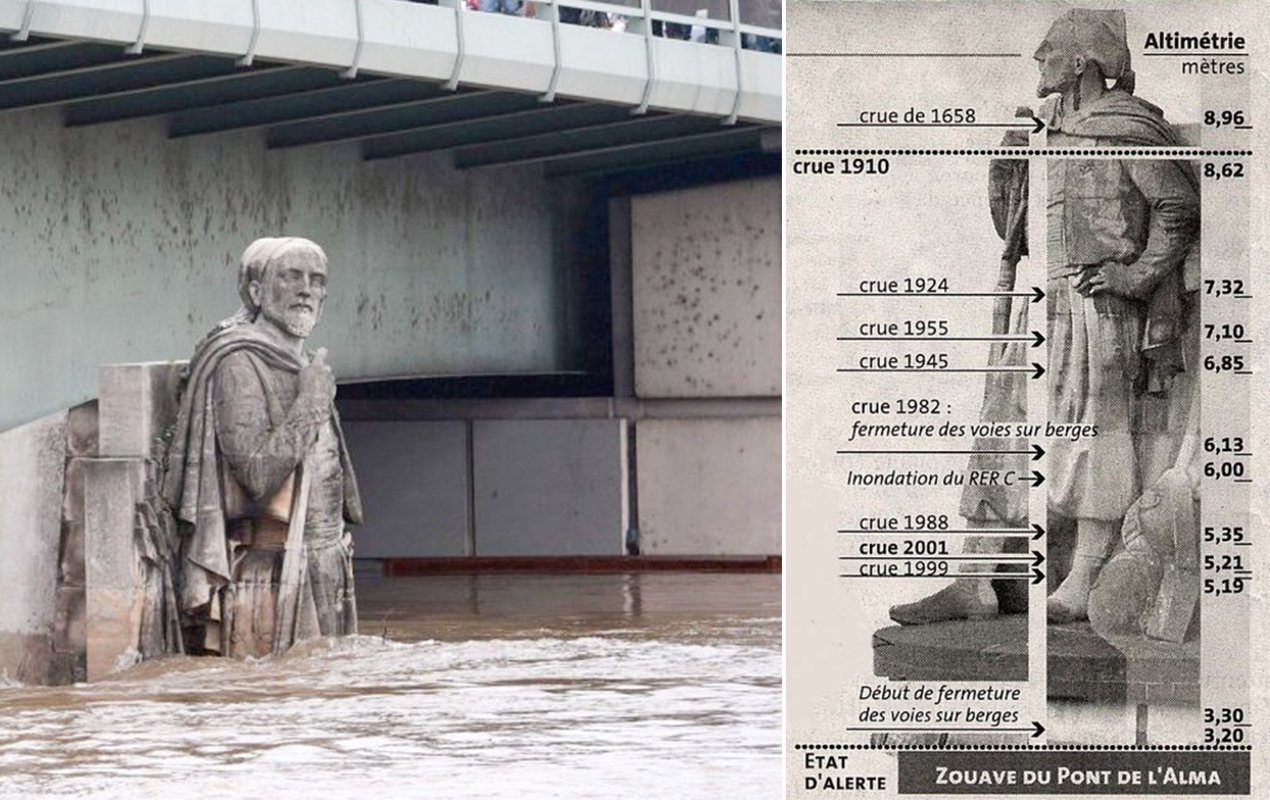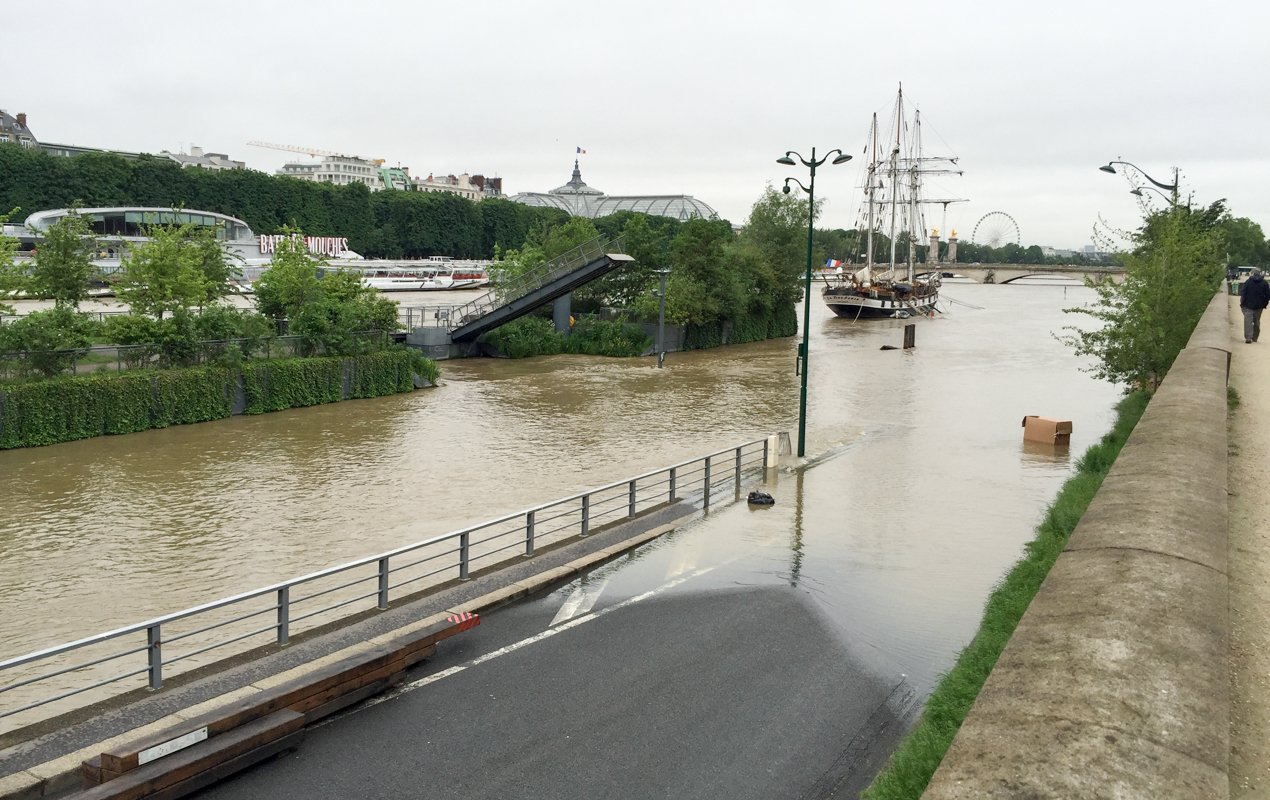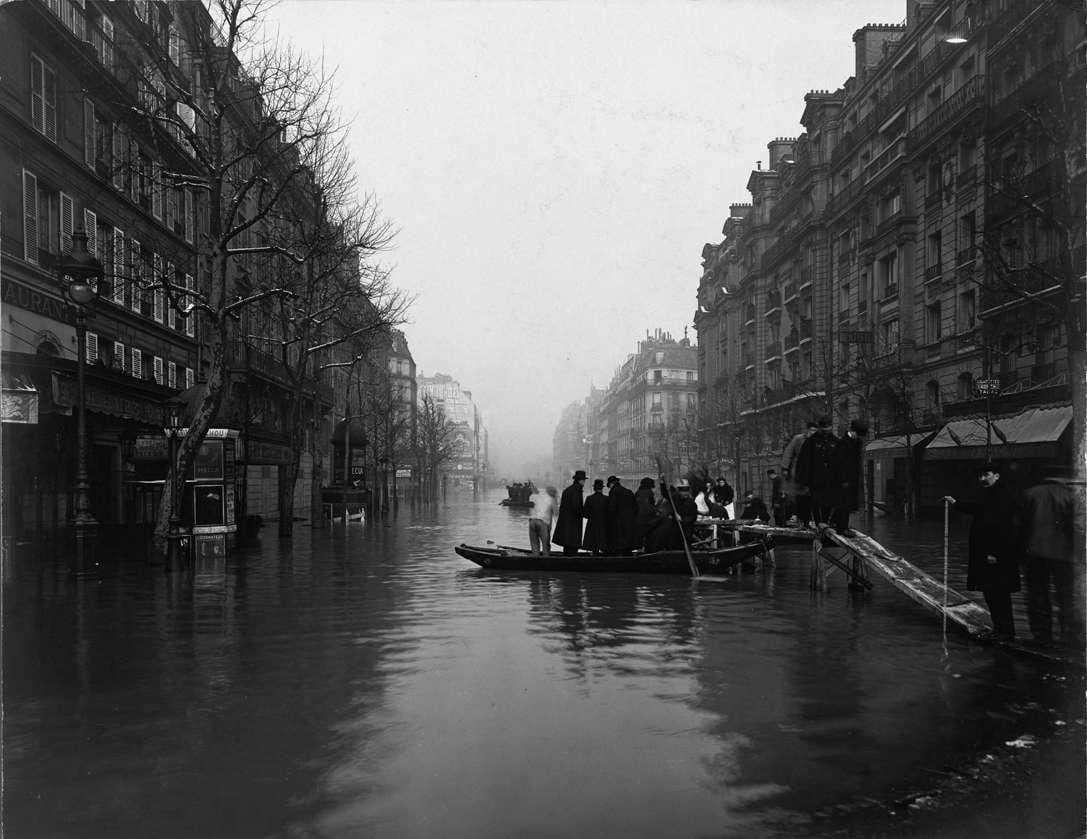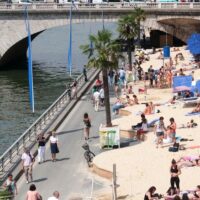
Last Thursday, I needed to drop off some things at La Place Dauphine, so I decided to rent a Velib, the inexpensive bike rental sponsored by the City of Paris. I started using them this year, and once you get the hang of the system, it’s a wonderful way to get around. Paris has created numerous bike lanes along the river and best of all, opened up the river bank for pedestrian and cycle traffic only. However, Philippe warned me that the Quai des Berges, the boulevard along the river, was closed due to high water. He wasn’t joking! I thought there would be just a few inches of water, and I could merrily splash through on my bike burning extra calories. Once I saw it for myself, however, I realized it would mean cycling up to my thighs and waist in water.
The scene had completely transformed from just days before, when my daughter Alexia and I rented Velibs and cycled along the riverbanks. I was shocked to see that the pillar we took a picture with, the one with a gold lizard wrapped around it, was almost completely covered with water. There were logs and debris floating in the water from further up-river, where flooding has been worse.
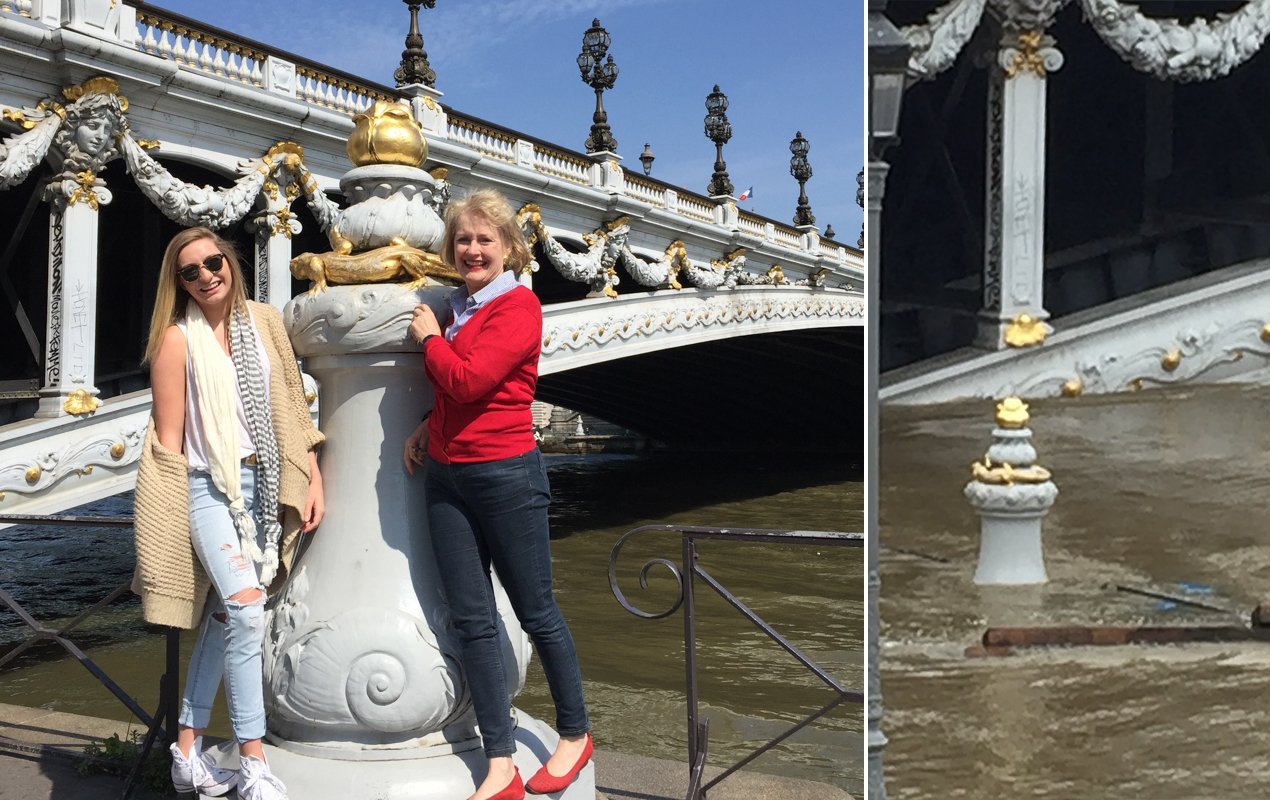
The “lizard” pillar, before and after the flood
This portion of the riverbank, around the stunning Pont Alexandre III, is a wonderful summertime hotspot, during normal river levels, that is. You can grab cocktails on boats, like the Rosa Bonheur pictured below, have a picnic anywhere along the bank or sit at one of the terraces that are set up during warmer months. There’s also a nightclub and restaurant underneath the bridge, and seeing as we’re already in June, it was shocking to see the entire riverbank submerged. What was once the perfect picnic spot had now become the exact opposite.
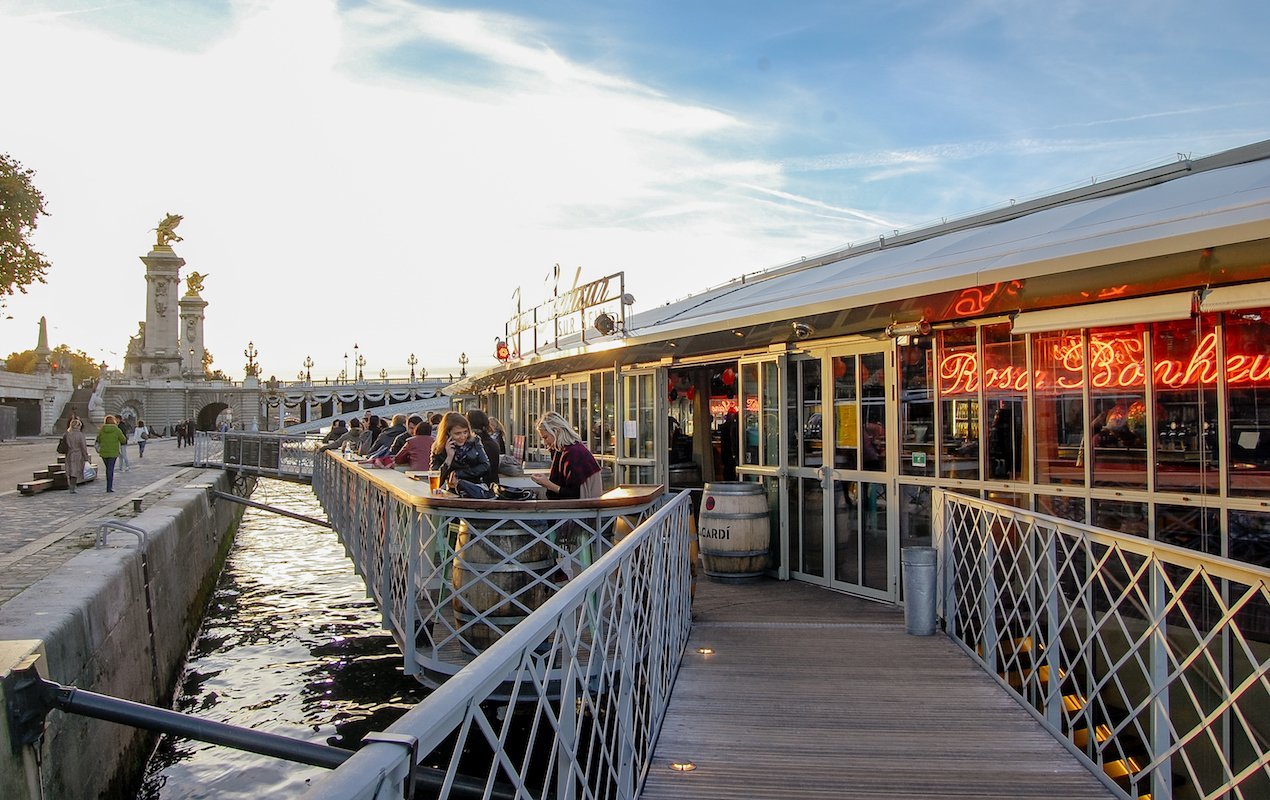
The Rosa Bonheur cocktail boat on a normal day – now inaccessible because of the floods
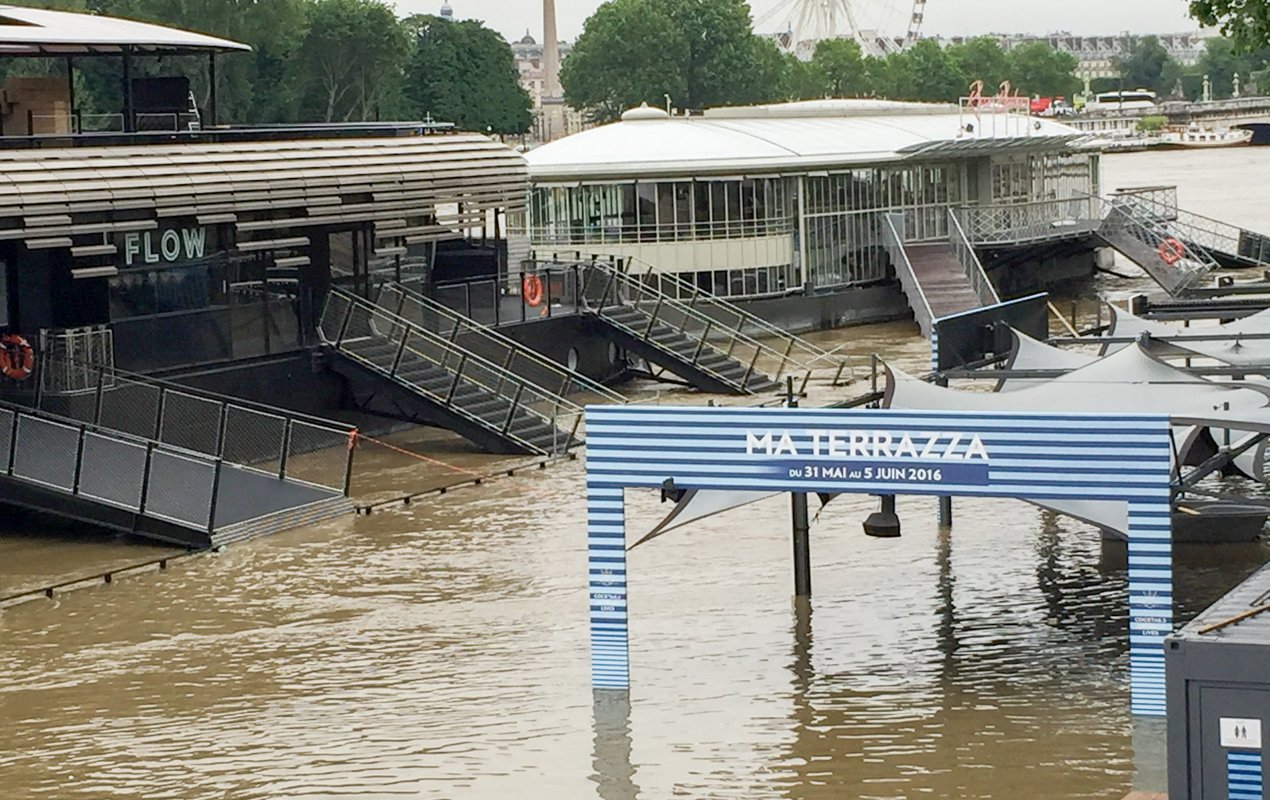
This used to be the site of a large terrace where sunbathers would sip rosé and admire the sunset behind the Pont Alexandre III
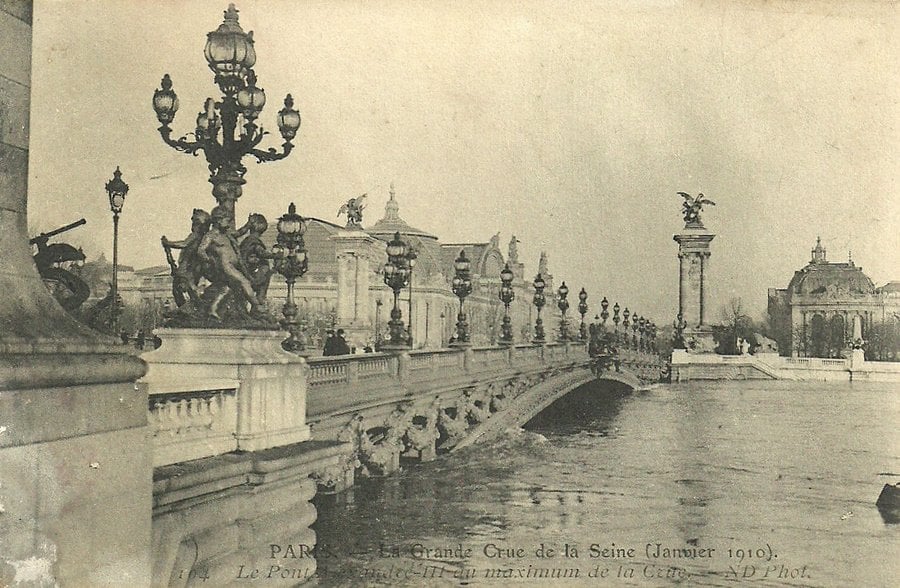
The Pont Alexandre III during the floods of 1910
Further along the river, I came across a half-submerged sign advertising the Paris Plages, a temporary faux-beach that is set up every August along the Seine. The Parisians wanted the ocean, and they got it, in a sense. Nature has a cruel sense of irony.
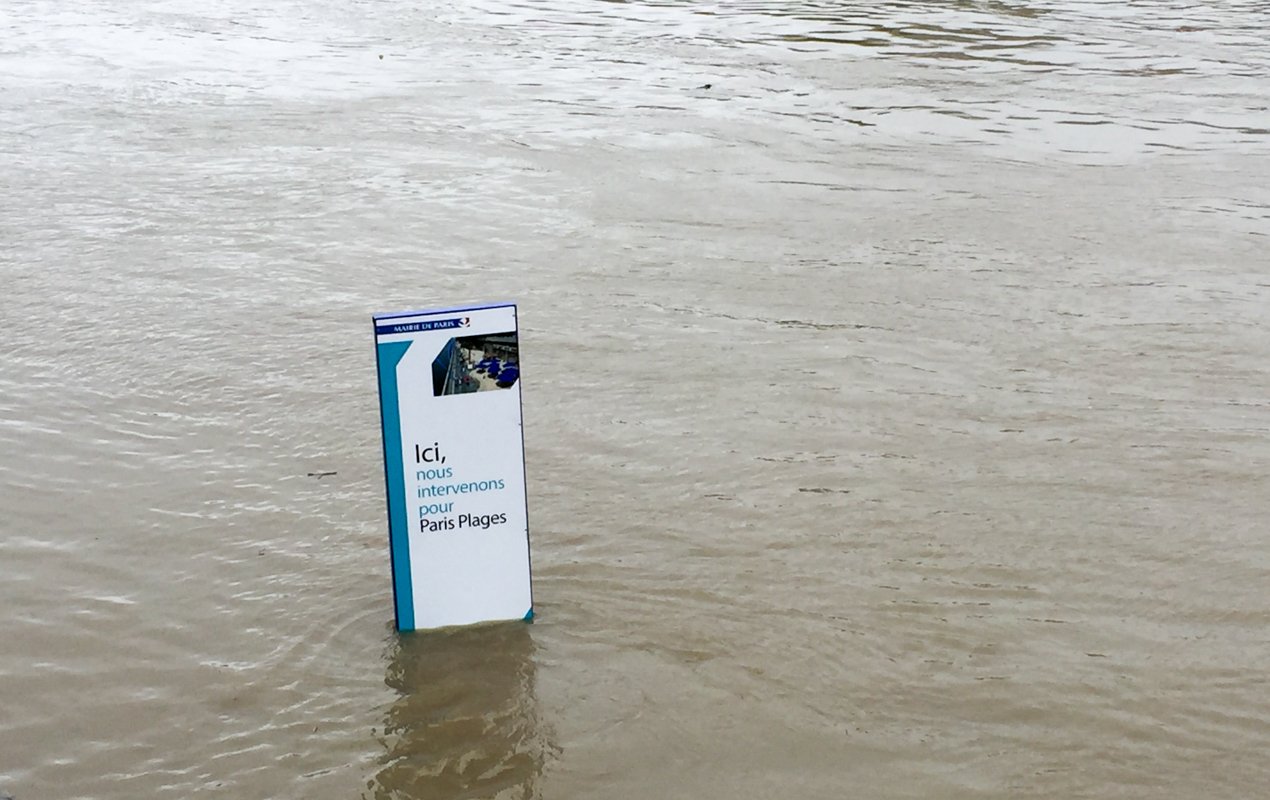
This sign reads – here we work to set up the Paris Plages – the faux beach that is arranged every summer along the river banks of the Seine.
The water has now started to recede slightly, but over the weekend reached 6.1 meters (20ft) over its normal level – that’s about 6 feet lower than the historical high reached in 1910.
One way the river level is measured is by Le Zouave. He is the last remaining statue built for the original Pont de l’Alma by Napoleon III. It was built in honor of the soldiers who fought in the Crimean War, more specifically, in the battle of Alma, won in 1854 by the British, French and Ottoman Turks. The Zouaves were the French troops of North African origin, and are generally recognized by their uniform – bloomers, wide belt, short jacket and fez. Their participation in this battle was crucial for victory, and the original bridge was built to honor that.
According to the graphic below, the flood of 1910 reached just below Le Zouave’s shoulders. This weekend, the flood rose to his thighs. The last time the water got this high, was 1982. You can see that the graphic even indicates the level at which the RER C train line is affected, parts of which run below street level, very close to the river.
Boats can no longer travel underneath the bridges, and a couple of small little islands in the middle of the river, such as the Square du Vert Gallant and the Île aux Cygnes, where the small version of the Statue of Libery resides, have been partially submerged.
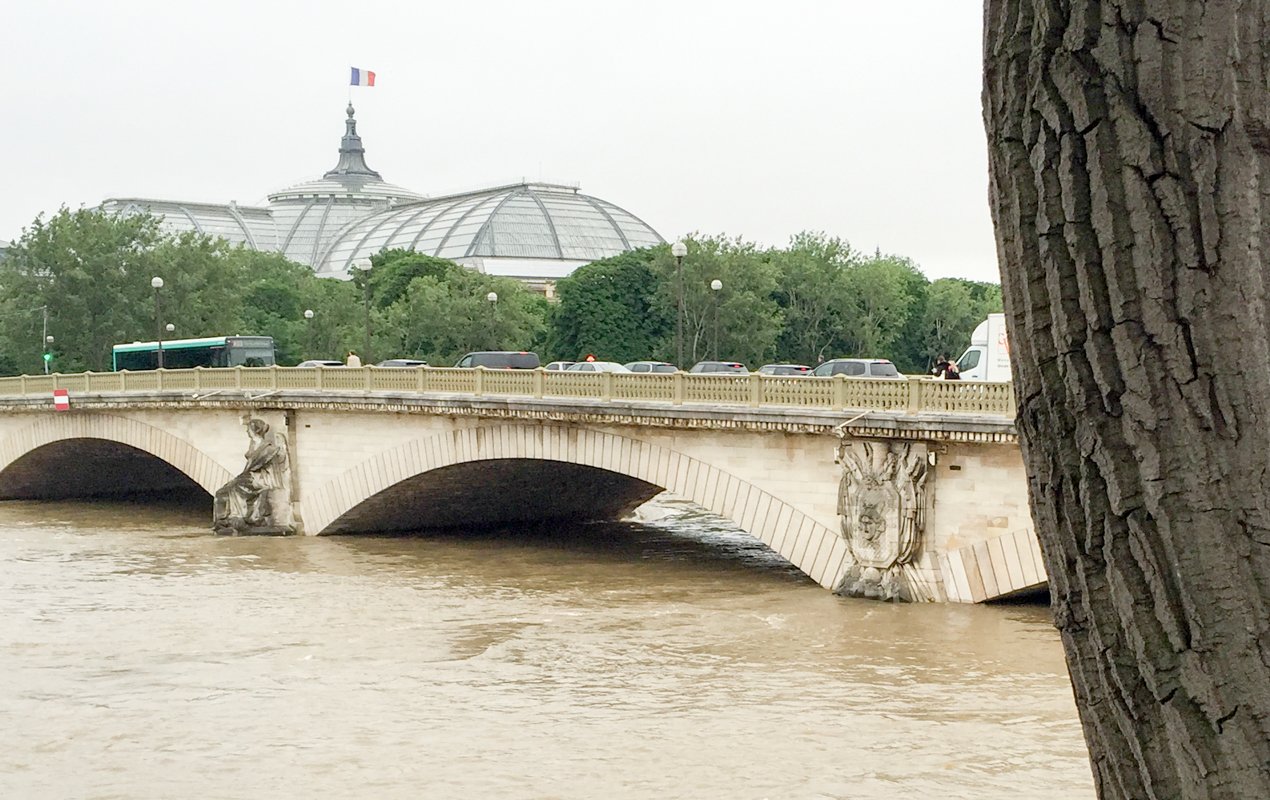
Not enough space under the bridges for boats to pass through
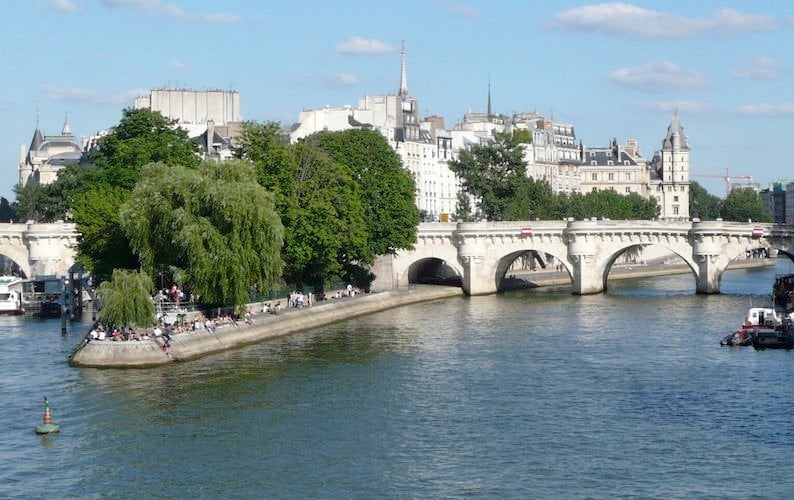
Normal river level at the Square du Vert Gallant, which is situated at the tip of the Île-de-la-Cité.

Looking towards the Square du Vert Gallant, which is partially submerged – just the treetops are poking out.
We all have our fingers crossed that the water level will continue to recede over the coming weeks. We’re just thankful that the water hasn’t flooded the actual streets yet, like it did in 1910. For now at least, the water is still mostly contained within the tall concrete banks. I was fascinated by these vintage photographs taken more than 100 years ago, and I’m sure glad we don’t have to use boats to get around town.
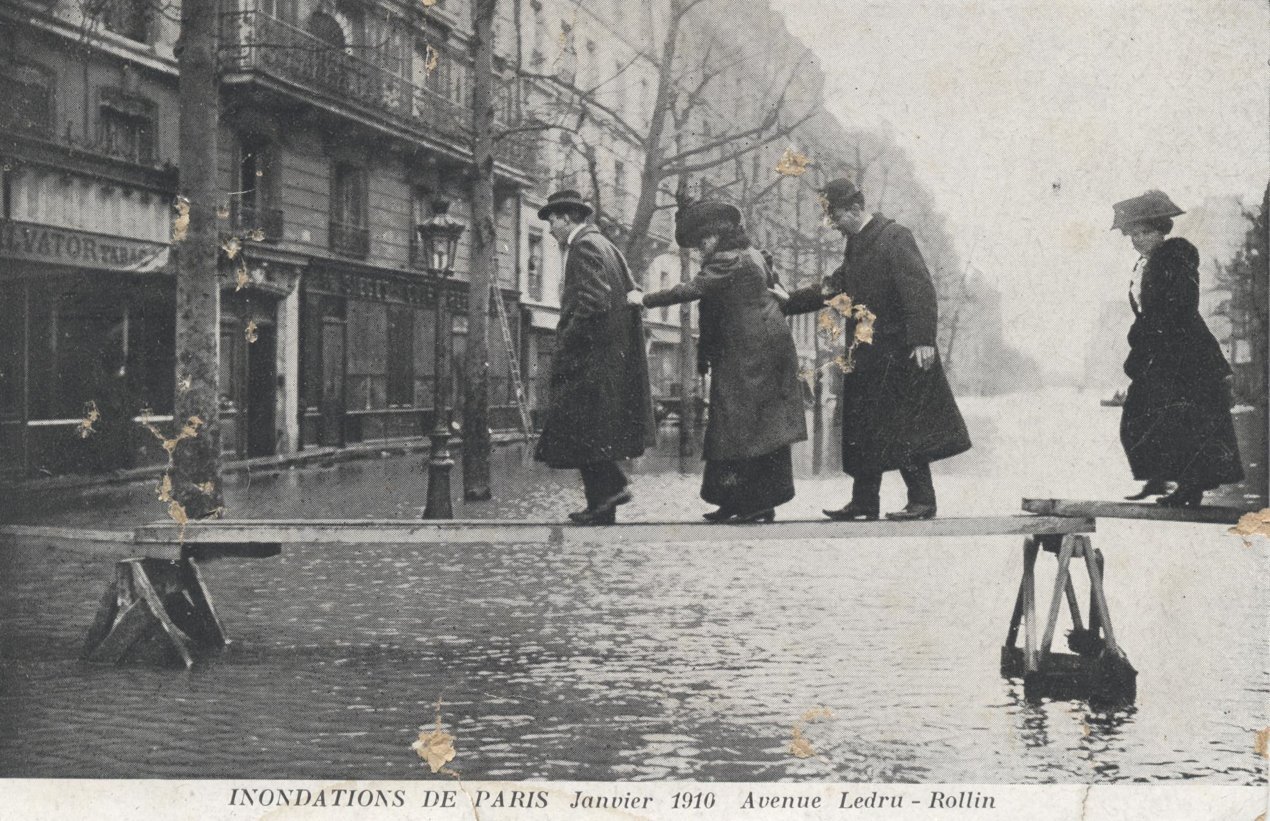
Parisians walking along a makeshift path made of wooden planks
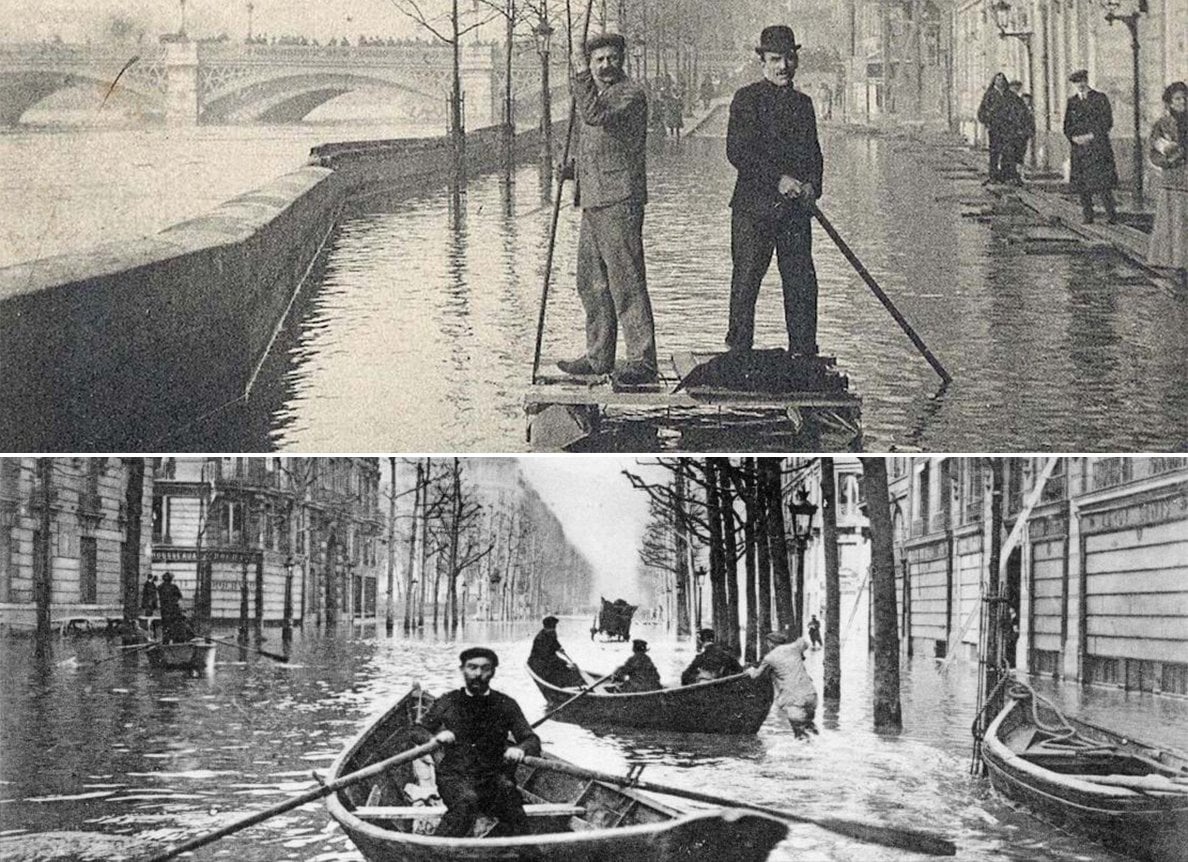
Boats in the flooded streets of Paris in 1910.
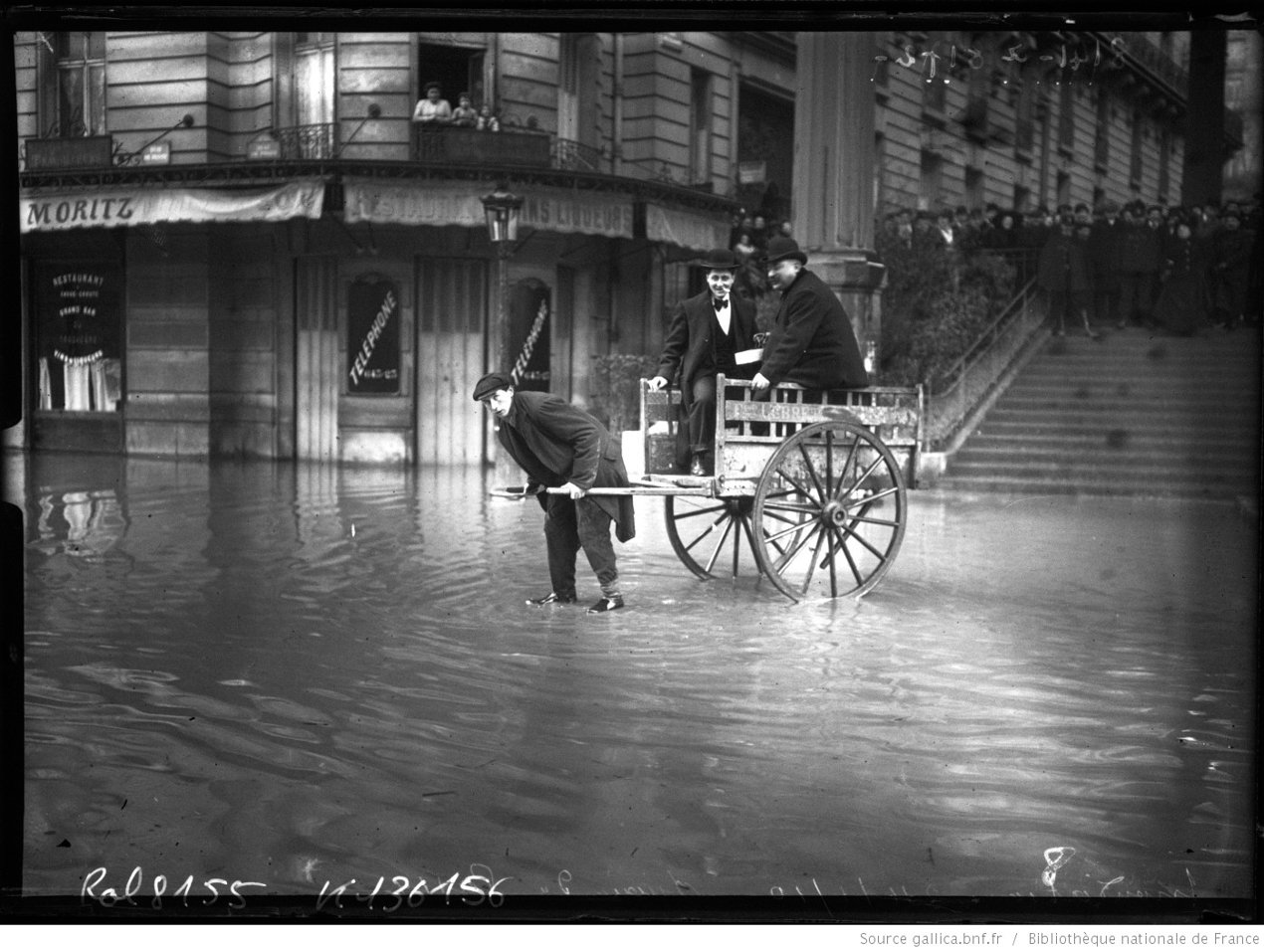
Although the damage hasn’t been too terrible in Paris, smaller towns in other parts of France and Germany haven’t been so lucky. Our hearts go out to the people who have been displaced in other cities, the business who have been damaged along the river in Paris, the museum workers who have strived to keep priceless artworks out of harm’s way, and the city officials who have been keeping everything running as smoothly as possible. We can only pray for a quick return to normal water levels.
If you’re currently a guest staying with us, don’t hesitate to contact us with any questions or issues you may have in regards to the flood. You can find on-site contact info in the welcome sheet you received before arrival in Paris, or in the information booklet inside your apartment.
